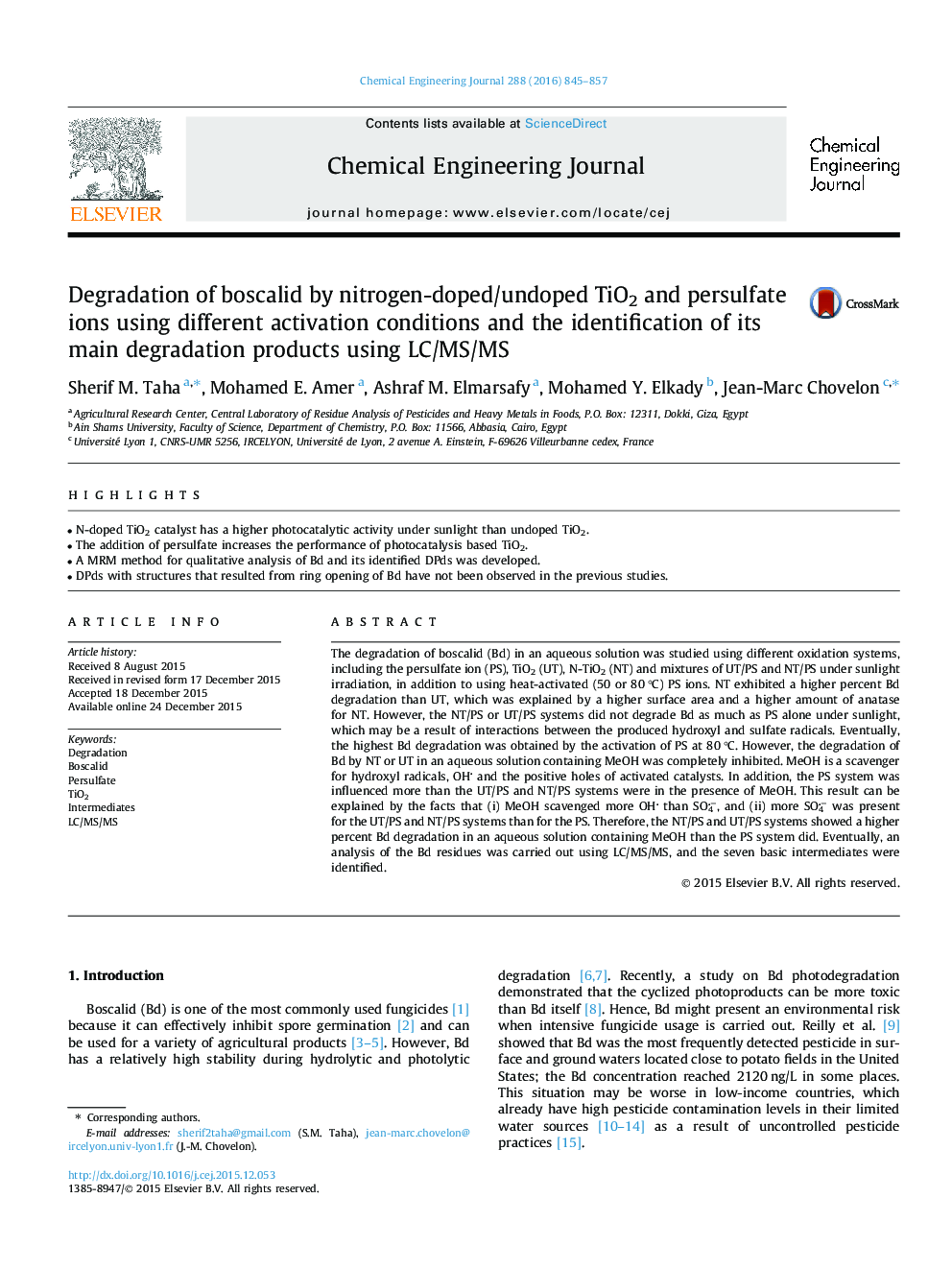| Article ID | Journal | Published Year | Pages | File Type |
|---|---|---|---|---|
| 6582278 | Chemical Engineering Journal | 2016 | 13 Pages |
Abstract
The degradation of boscalid (Bd) in an aqueous solution was studied using different oxidation systems, including the persulfate ion (PS), TiO2 (UT), N-TiO2 (NT) and mixtures of UT/PS and NT/PS under sunlight irradiation, in addition to using heat-activated (50 or 80 °C) PS ions. NT exhibited a higher percent Bd degradation than UT, which was explained by a higher surface area and a higher amount of anatase for NT. However, the NT/PS or UT/PS systems did not degrade Bd as much as PS alone under sunlight, which may be a result of interactions between the produced hydroxyl and sulfate radicals. Eventually, the highest Bd degradation was obtained by the activation of PS at 80 °C. However, the degradation of Bd by NT or UT in an aqueous solution containing MeOH was completely inhibited. MeOH is a scavenger for hydroxyl radicals, OH and the positive holes of activated catalysts. In addition, the PS system was influenced more than the UT/PS and NT/PS systems were in the presence of MeOH. This result can be explained by the facts that (i) MeOH scavenged more OH than SO4â, and (ii) more SO4â was present for the UT/PS and NT/PS systems than for the PS. Therefore, the NT/PS and UT/PS systems showed a higher percent Bd degradation in an aqueous solution containing MeOH than the PS system did. Eventually, an analysis of the Bd residues was carried out using LC/MS/MS, and the seven basic intermediates were identified.
Related Topics
Physical Sciences and Engineering
Chemical Engineering
Chemical Engineering (General)
Authors
Sherif M. Taha, Mohamed E. Amer, Ashraf M. Elmarsafy, Mohamed Y. Elkady, Jean-Marc Chovelon,
